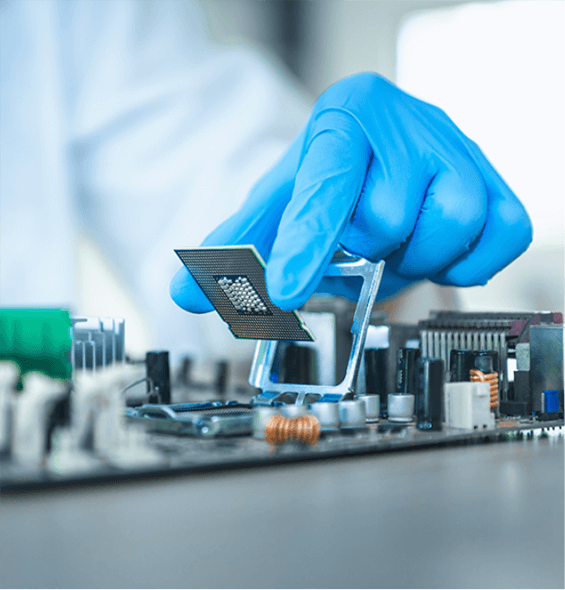Quality Inspection Process

Typical testing process at Ampheo Independent Testing Laboratories.
With rigid testing procedures, uncompromising quality standards, and meaningful reports, Ampheo Independent Testing Laboratories helps secure supply chains in the electronics industry.
Our experienced engineers conduct functional and electrical tests, carrying microscopic inspections, X-ray analyses, and using Scanning Electron Microscopes (SEM) to identify any internal or external defects. So at our own Test Lab, we also can provide professional electrical testing and analysis job for electronic components.
QI Process
Decapsulation
Decapsulation is mainly to use instruments to corrode the package on the surface of the chip to check whether there is a wafer inside, the size of the wafer, the manufacturer’s logo, the copyright year, and the wafer code to determine the authenticity of the chip.
It will allow us to microscopically reveal the manufacturer, logo, internal part numbers and date supplied by the original component manufacturer.
This process is a destructive die verification one, which involves exposing the internal die of an IC or component.
External Visual Inspection
Appearance test means to confirm the number of chips received, inner packaging, humidity indicator, desiccant requirements and appropriate outer packaging. Secondly, the appearance of a single chip is inspected, including: the typing of the chip, the year, the country of origin, whether it is re-coated, the state of the pins, whether there are traces of re-grinding, unidentified residues, and the location of the manufacturer’s logo.
Appearance defect inspection is a very important part of the electronics, precision hardware, printing, plastics and other industries. Both users and manufacturers attach great importance to the appearance of products. Therefore, appearance visual inspection has become very important One ring.
X-Ray inspection
X-ray test is a real-time non-destructive analysis to check the internal hardware components of the component. It mainly checks the lead frame of the chip, wafer size, gold wire bonding diagram, ESD damage and holes. Customers can provide good products for comparison.
X-Ray is a relatively inexpensive process with minimal set-up and immediate feedback on the interior structure of a device.
It can also help to detect any abnormalities without being destructive to the units.
It allows the operator to view the internal die orientation/size, bond wire patterns, lead frame patterns and inspect for any foreign material.
Uniformity of internal structures is further evaluated among material within the same lot/batch. This process is performed in accordance with MIL-STD-883.
Counterfeit Screening
Counterfeit Screening consists of a variety of key functional parameters developed and implemented by our engineers, per manufacturer specifications, to verify both authenticity and functionality of a device.
The counterfeit screening process will identify remarked and defective devices preventing them from entering or continuing through the supply chain.
C-SAM Analysis
Improper solder reflow techniques or improper handling of moisture-sensitive devices can cause delamination and/or voids which is a separation of the die from the molding compound.
C-SAM analysis is a screening technique that can uncover anomalies within a device’s package and construction through and to the die level.
Heated Chemical Testing
The heated chemical process removes the markings and top layer of the component. This allows our techs to inspect for signs of remarking. These signs can include: prior markings, sanding, pitting, differing body material or other evidence of tampering.
A submersion test utilizing 1-Methyl 2-Pyrrolidinone followed by Dynasolve removes the part markings and the top layer of the device. This process is very useful in counterfeit detection and is performed in accordance with MIL-STD-883, Method 2015.
Resistance to Solvents
Resistance to Solvents (RtS) is a marking permanency test. The top side of devices are subjected to multiple chemicals and evaluated for part marking or body deviations and evidence of potential remarking.
This process uses a variety of solvents and is performed per MIL-STD-883 Method 2015, AS6171, AS6081 or to the requesting customer’s specific requirements.
Solderability Testing
Solderability testing is performed per MIL-STD-883. The device(s) endure a “Steam Age” process which artificially “ages” the leads of the device(s) ten years within eight hours.
Testing verifies whether the solder adheres to at least 95% of the usable area of the leads on a device or if it does not. This test is considered destructive.
